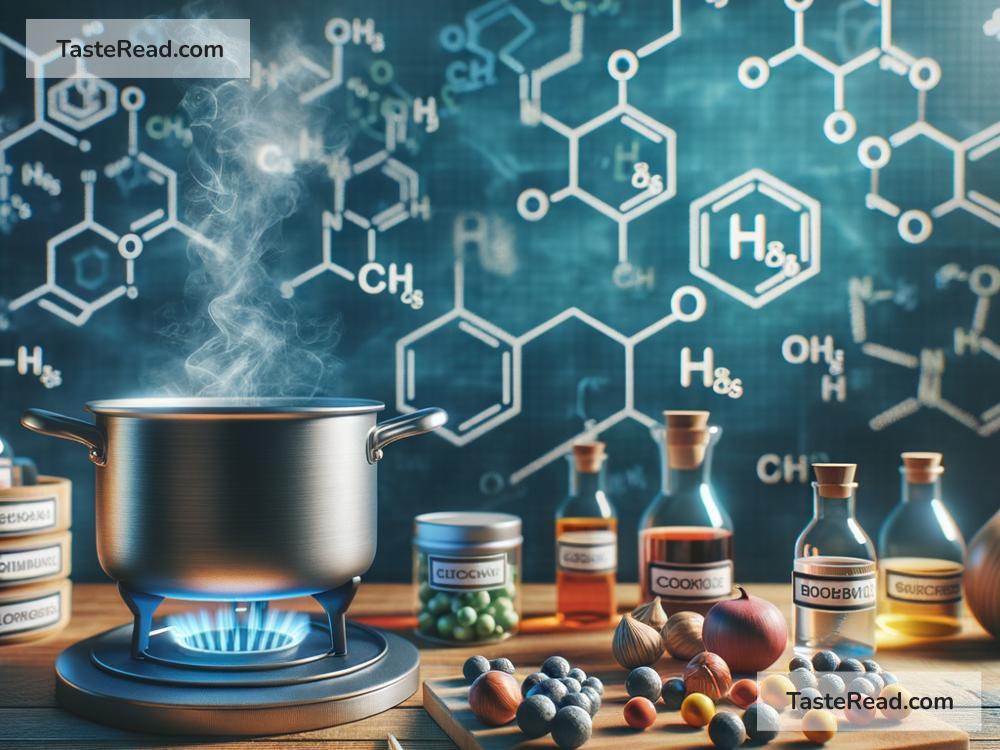The Science of Cooking with Chemical Velocity: Techniques and Tips
Cooking is not just an art; it’s also a science. Behind the delicious meals we enjoy is a world of chemical reactions and transformations happening at the molecular level. One fascinating concept in the science of cooking is chemical velocity—the speed at which chemical reactions occur. In simple terms, chemical velocity plays a big role in determining how fast your food cooks, how flavors develop, and even the texture of your dish. In this blog, we’ll break down this concept and share techniques and tips on how to elevate your cooking using this scientific principle.
What is Chemical Velocity?
Chemical velocity refers to the rate or speed at which chemical reactions happen. In cooking, chemical reactions include processes like caramelization (browning sugar), Maillard reaction (protein and sugar interaction that creates flavor), and the breaking down of starches and proteins when food is heated. These reactions dictate everything from whether your steak has a perfect sear to how fluffy your cake turns out.
Many factors influence chemical velocity, including temperature, the concentration of ingredients, the surface area of food, and the presence of catalysts. In the kitchen, understanding these factors can help you control cooking outcomes and create meals that are both flavorful and consistent.
Techniques to Boost Chemical Velocity in Cooking
Now that we know what chemical velocity is, let’s explore techniques and tips that use this principle to improve your cooking:
1. Turn Up the Heat (But Be Careful!)
Temperature is one of the biggest drivers of chemical velocity. The higher the heat, the faster chemical reactions occur. For example, boiling water at 100°C will cook pasta faster than simmering it at a lower temperature. Similarly, a hot pan can quickly sear proteins, accelerating the Maillard reaction and giving meat that delicious golden crust.
However, it’s important to find a balance. Excessive heat can lead to overcooking or burning. For delicate foods like fish or eggs, moderate heat is better to achieve precise results without ruining the texture or flavor.
2. Cutting and Crushing to Increase Surface Area
Chemical reactions occur faster when ingredients have more surface area. When you chop, slice, or crush food, you expose more of it to heat and other ingredients, speeding up the cooking process. For instance:
– Finely chopped onions caramelize faster than whole onions.
– Grated ginger releases its aroma and flavor more quickly than a large piece.
To save time and improve the efficiency of your cooking, use techniques like grating, mincing, or slicing.
3. Use Acid as a Catalyst
Acidic ingredients like lemon juice, vinegar, or yogurt speed up certain chemical reactions. For example, when marinating meat, adding acidity can help break down proteins, making the meat tender faster. Similarly, citrus juices can “cook” fish in dishes like ceviche, a method known as denaturation.
Tip: Be cautious with acidic ingredients when baking. Too much acid can interfere with leavening agents like baking soda or baking powder.
4. Mix and Stir for Faster Reactions
Mixing and stirring evenly distribute heat and ingredients, increasing chemical velocity. This is why vigorous whisking is essential for making emulsions like mayonnaise or getting a smooth gravy. For instance, stirring risotto regularly ensures even cooking and releases starch for a creamy texture.
Techniques to Slow Down Chemical Velocity (When Needed)
Interestingly, there are times when slowing down chemical reactions can improve your cooking. Here are some tips to control chemical velocity when slow methods are necessary:
1. Lower the Heat for Slow Cooking
While high heat can speed up cooking, low and slow methods allow you to develop deeper, richer flavors. For example, simmering a stew over low heat lets the ingredients break down and meld together gradually. Slow cooking also helps retain moisture in dishes like pulled pork or braised beef.
2. Chill Ingredients to Delay Chemical Reactions
Cold temperatures slow chemical velocity, which is why refrigeration is essential. Marinating meat overnight in the fridge ensures slower, even breakdown of proteins for tender results. Similarly, resting dough in a cool environment for recipes like bread or pie crust allows gluten formation to happen slowly, improving texture.
3. Control the Timing
Some dishes benefit from extended preparation times. For instance, letting cookie dough rest overnight can slow down gluten development and enhance the flavor. Patience is key in many recipes, especially when dealing with fermentation or curing processes.
Experimenting with Chemical Velocity
Cooking with chemical velocity in mind doesn’t require a science degree; it’s all about paying attention to how heat, time, ingredients, and preparation techniques interact. Here are some fun ways to experiment:
– Try using different cooking methods, like roasting, steaming, or grilling, and observe their effects on flavor development.
– Practice searing versus slow-cooking proteins and compare the results.
– Experiment with marinating times to see how acids influence texture and taste.
Final Thoughts
Cooking is an everyday science experiment, and understanding chemical velocity gives you the power to refine your techniques and make more informed decisions in the kitchen. By controlling factors like heat, surface area, and acidity, you can speed up or slow down reactions to achieve the perfect result every time. Whether it’s a quick weeknight dinner or a slow-cooked feast, knowing how to harness chemical velocity will help you cook smarter—not just harder.
So, the next time you’re in the kitchen, take a moment to appreciate the science behind the flavors, textures, and smells. With a little practice and curiosity, you’ll be able to use chemical velocity to cook like a pro!
Happy cooking!


